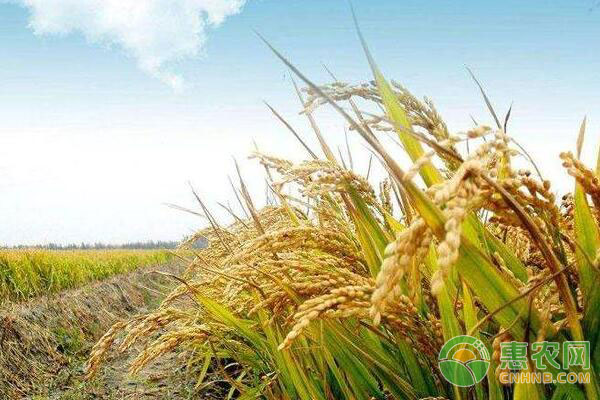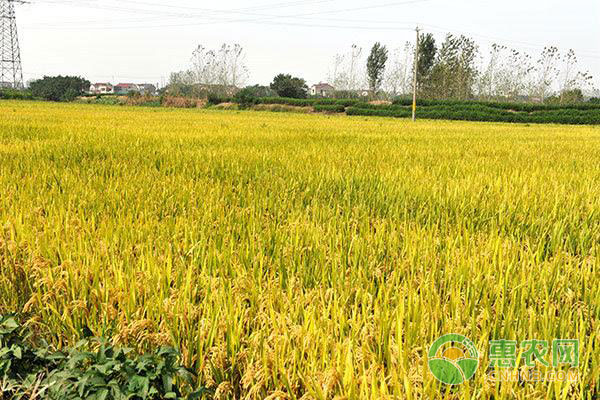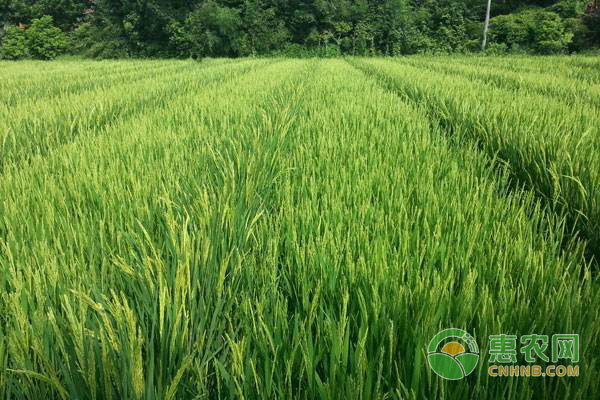How to plant green high-quality rice? Only when the quality of rice goes up, can we sell a better price. Today, Huinong Xiaobian will talk about high-yield high-yield cultivation techniques for green high-quality rice, hoping to help farmers. 1 Technical introduction With the goal of producing green high-quality rice, we will ensure safe and high quality by selecting suitable planting bases and high-quality rice varieties. Through fitness cultivation, organic replacement of fertilizers, optimization of efficient fertilization and green plant protection, reducing the amount of fertilizers and pesticides, and ensuring the quality of rice. And safety, ensuring environmental safety and preventing rice pollution through safe harvesting, storage and comprehensive utilization of by-products. 2 Technical goals 2.1 Production target Early and late rice every 667m2400 ~ 450kg, one season rice per 667m2 450 ~ 500kg. 2.2 meter target Grade A green rice, rice quality national standard level three or above. 2.3 The amount of chemical nitrogen fertilizer is reduced by about 50%, the amount of pesticides is reduced by about 40%, and the income per 667m2 is increased by more than 100 yuan. 3 Technical points 3.1 Base selection The base should be kept away from pollution sources, ecological conditions are good, biodiversity is maintained well, and the soil, water and atmosphere of the production area meet the requirements. At the same time, Britain should choose an independent ecological small watershed and a good isolation area. The paddy field should be relatively flat, convenient for irrigation and drainage, drought and flood protection, less susceptible to flood and drought, soil-borne diseases and malignant weeds, and concentrated contiguous . 3.2 Variety selection High-quality rice varieties or combinations with excellent rice quality, good yield stability, suitable growth period, and approval, and strong resistance to diseases and insect pests should be selected, and the varieties should be replaced regularly. 3.3 Planting mode It advocates the use of ecological planting models, such as rice-duck (fishing, frog) co-cultivation, animal-marsh-rice and other ecological breeding models. 3.4 cultivating strong Improve the resistance and early-morning ability of seedlings by cultivating strong seedlings. (1) Seeding for 1 to 2 days before sowing. (2) Request for dilution. (3) Apply enough base fertilizer and timely topdressing. (4) Strengthen the prevention and control of pests such as pests and diseases in Putian, and adhere to the principle of prevention, agriculture, biology and physical technology. When the above measures fail to achieve the control effect, chemical control can be used, but the relevant requirements are met. . 3.5 Reasonable close planting According to different breeding methods, suitable age-shifting and transplanting should be carried out to increase the density. Generally, double-season early rice is inserted into 2.2 to 25,000 per acre, 2 seedlings per hybrid rice, and 4 to 5 grain seedlings in conventional rice. 1.2 to 16,000 baht, one grain seedling per hybrid rice, 2 to 3 grain seedlings per regular rice, and 1.8 to 22,000 baht in the second season of late rice, 1 to 2 grain seedlings per hybrid rice, regular rice 3 to 4 grain seedlings per cutting. The transplanting or machine insertion is carried out by wide-package planting, and the throwing is required to take out the work every 3m. 3.6 Optimize fertilization Adhere to the principle of fertilization supplemented by organic fertilizer, supplemented by chemical fertilizers, and controlled by nitrogen, phosphorus and potassium. Organic nitrogen accounts for more than 50% of total nitrogen application. Organic fertilizer can be used for green manure, straw returning, biogas fertilizer, cake fertilizer, and poultry. Feces and commercial organic fertilizers. The soil fertilization technology is used to determine the amount of fertilizer to achieve precise fertilization. Organic fertilizers and phosphate fertilizers are generally used as base fertilizers. It is forbidden to use chemical fertilizers and biological fertilizers that have not been registered by national or provincial agricultural departments and organic fertilizers and mineral fertilizers with excessive heavy metals. . 3.7 Scientific irrigation The irrigation of high-quality cultivation should pay attention to the following points: First, water-controlled irrigation, generally each irrigation depth is about 2cm, and try to increase the rice field exposure time, except for the other fields in the field, the field will not crack; the second is early Light sun. When the number of seedlings reaches 70% to 90% of the planned number of panicles, the sun-dried field begins to be sun-dried. When the field is opened to the side of the field, the claws are cracked. When the field is not trapped, the thin water is wet, and the crack does not widen and the soil does not soften. Light sun, to the second leaf dew stage rehydration tires; the third is to meet the adverse weather in the filling period to fill more than 10cm deep water temperature regulation, early rice encountered high temperature and late rice encountered low temperature can be filled with deep water temperature regulation; Prematurely, water is cut off 5 days before harvest, late rice and 7 days before harvest. 3.8 Pest and disease prevention and control Adhere to the plant protection policy of “prevention first, comprehensive prevention†and comprehensive measures to control the occurrence of harmful organisms. It should follow the principle of prevention and treatment, and proceed from the whole rice field ecosystem, based on agricultural control, comprehensively use physical control, biological control and other measures to create environmental conditions that are conducive to pests and diseases and beneficial to the proliferation of various natural enemies. Diversity, maintain the ecological balance of rice fields, and reduce the losses caused by various pests and diseases. Common measures are: (1) Agricultural control. The rice fields are smelted with lime for disinfection, pests and diseases are removed, and rice peas are planted around the rice fields to increase the diversity of vegetation and create conditions suitable for the growth and development of natural enemies. (2) Physical control. 2 ~ 3.33hm2 installation of a trapping light; 20 acres of yellow sticky insect board, trapping aphids, leaf curlers, bandits, leafhoppers and so on. Use insect traps to kill rice horses. (3) Biological control. Vigorously promote beneficial organisms or use natural enemies of rice pests to control pests. Such as ducks to control insects. (4) Drug control. On the basis of accurate forecasting, grasp the occurrence of pests and diseases in Datian, do not reach the target of prevention and control, do not fight drugs, protect the use of natural enemies, and prevent and select the biological pesticides. Everyone knows about high-quality rice high-yield cultivation techniques. If you want to grow green and high-quality rice, you can refer to this article to learn. X-RAY ZHEJIANG FOMOS MEDICAL TECHNOLOGY CO.,LTD. , https://www.ifomos.com


Talking about high-yield cultivation techniques of green high quality rice
Prev Article
Feeding method for broiler chicken